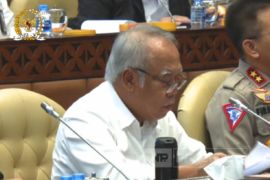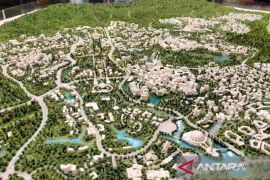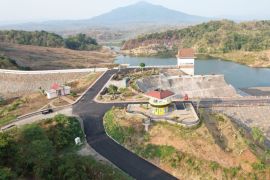The SNIs have been prepared to ensure the safety and strength of the existing structure...Jakarta (ANTARA) - The Public Works and Public Housing (PUPR) Ministry has developed an innovation for retrofitting the existing infrastructure construction to realize reliable and sustainable infrastructure development across Indonesia by using reinforced polymer fiber (FRP).
"The use of appropriate, effective, and environmentally friendly technology is encouraged to create value-added and sustainable development whose benefits can be felt by future generations," PUPR Minister Basuki Hadimuljono noted in a statement received here on Friday.
Hadimuljono highlighted the importance of innovation and technology support for conducting faster, accurate, efficient, and quality infrastructure development.
Meanwhile, in maintaining reliability of the existing building, the structure must be retrofitted to enable it to hold larger loads, repair the damage, correct design flaws, improve on the performance weaknesses, and increase ductility.
The FRP material can be used for retrofitting. It is a lightweight and non-corrosive material with high tensile strength.
The thin profile of FRP is often used for structures that prioritize the aesthetics or accessibility aspects. It can be used for structures that cannot be created with conventional techniques.
To disseminate information on the use of the material, the Directorate of Settlement and Housing Engineering (BTPP) of the ministry held the Technical Guidance on Retrofitting Existing Structures Using FRP Materials.
Related news: BPKN underscores importance of SNI for products with high risk
BTPP Director Dian Irawati noted in her remarks at the event that the reinforcement of concrete structures using FRP material is regulated in six Indonesian National Standard (SNI): the SNI 8970:2021, SNI 8971:2021, SNI 8972:2021, SNI 8973:2021, SNI 8974:2021, and SNI 8975:2021.
"The SNIs have been readied to ensure the safety and strength of existing structure by establishing complete requirements and calculations to increase the capacity of the structure to hold the desired loads," she noted.
She affirmed that the attempt aligned with the mandate to meet the security aspects listed in Law Number 28 of 2002 on Buildings.
Related news: SNI regulation strengthened for domestic industry's competitiveness
Translator: Aji Cakti, Uyu Liman
Editor: Rahmad Nasution
Copyright © ANTARA 2022












